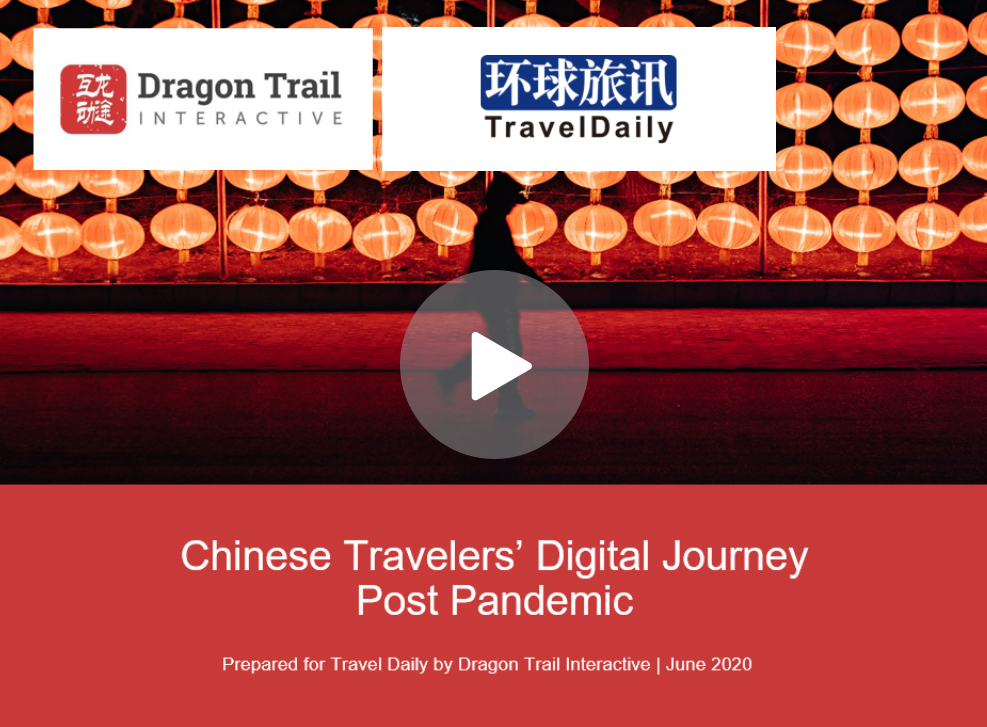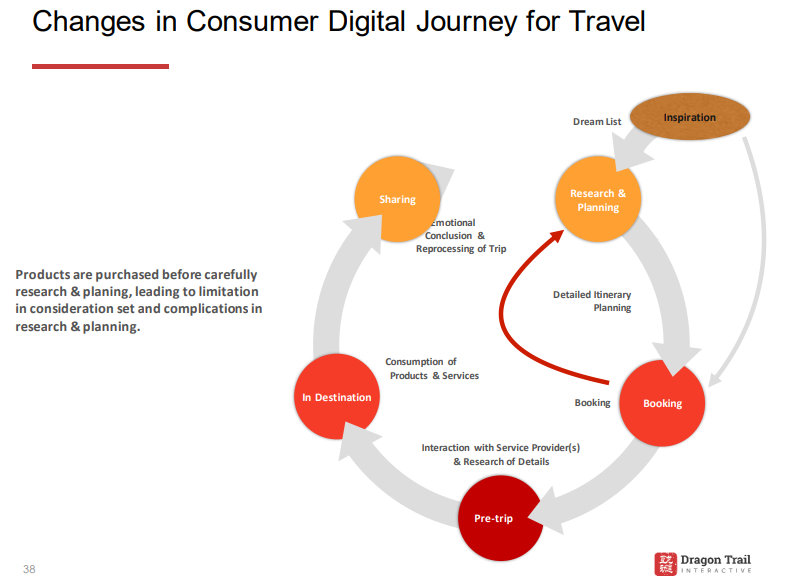ChinaTravelNews, Jerry Tang - In the era of social media and digital lifestyle, people tend to notice and understand brands and services better by more intuitive media forms. For example, words are less eye-catching than a clear JPG picture, an animated GIF picture can tell a story much more vividly, and a video clip delivers richer and more persuasive information to prompt immediate the targeted audience to take action.
Live streaming is akin to having a video live on air that is interactive throughout.
In a webinar hosted by TravelDaily on June 23, Mr. George Cao, CEO of travel-focused digital marketing agency Dragon Trail Interactive, shared his insights on Chinese consumers' digital journey and how travel companies in China are leveraging live streaming to not just enhance their brand awareness but actually boost sales.
Live streaming is nothing new. But in the lockdown and reopening spells in China, live streaming has been playing a more important role than ever for marketers in e-commerce, lifestyle service, travel and other sectors.
As of March this year, China had 560 million live streaming viewers, according to data from the China Internet Network Information Center (CNNIC). That's 62% of the country's internet users.
Value in travel live streaming
Mr. Cao admitted that though the interactive and pro-active online sales and promotion process can certainly help conversion, live streaming travel and hospitality offerings is not as easy as it may appear.
By providing clear visuals of a complex mixture of online and offline travel products and services, it helps consumers understand what’s on offer. Yet to achieve really significant sales results, live streamers need to offer popular and quality products at heavily discounted prices, but that may pose a dilemma between increasing demand and maximizing profitability, Mr. Cao said.
(Click here to watch the video if you have trouble visiting YouTube.)
Packaging products to create advance purchase offerings in live streaming is also challenging. "You need to package your products in a way that consumers can buy first, use later. This presents some challenges for travel products," said Mr. Cao.
Nevertheless, strengthening brand awareness through live streaming at a time when travel is literally impossible can pay off well. To some extent, live streaming plays a bigger role in "being there and cheering on" than actually driving huge sales.
Changes in the consumer digital journey
According to Mr. Cao, the consumer digital journey for travel had a clear path before the pandemic, from inspiration to research and planning, booking, pre-trip, in-destination and sharing.
But the long process of awareness building, evaluation and purchasing has collapsed to a single carefully orchestrated promotional event after the virus outbreak changed consumer behaviors.
Attracted by great deals offered by travel brands, consumers may act on impulse, skipping the research and planning phase and jump directly to make reservations.
When products are purchased before careful research and planning and measured consideration, the consumers may go back to the research phase after they have made their reservation, which may complicate the situation.
Mr. Cao advised that travel brands should leverage consumer data to learn more about the potential impact of live streaming and short videos, so that they can make the right decisions in their digital marketing strategies targeting Chinese travel consumers.
"Digital will become more prominent in the travel planning process. More tools and platforms will play a role, and more touchpoints will emerge," said Mr. Cao. "It will be increasingly difficult to fully understand the consumer journey without data."






